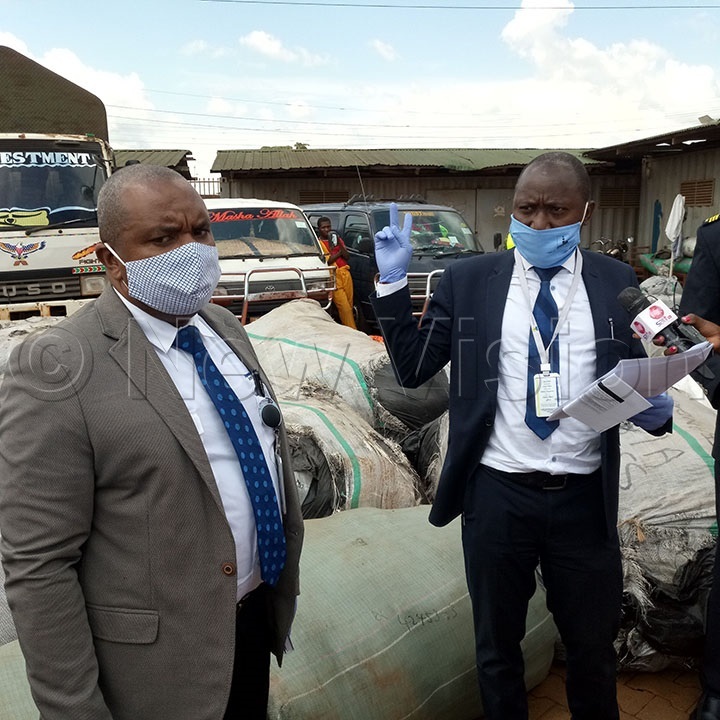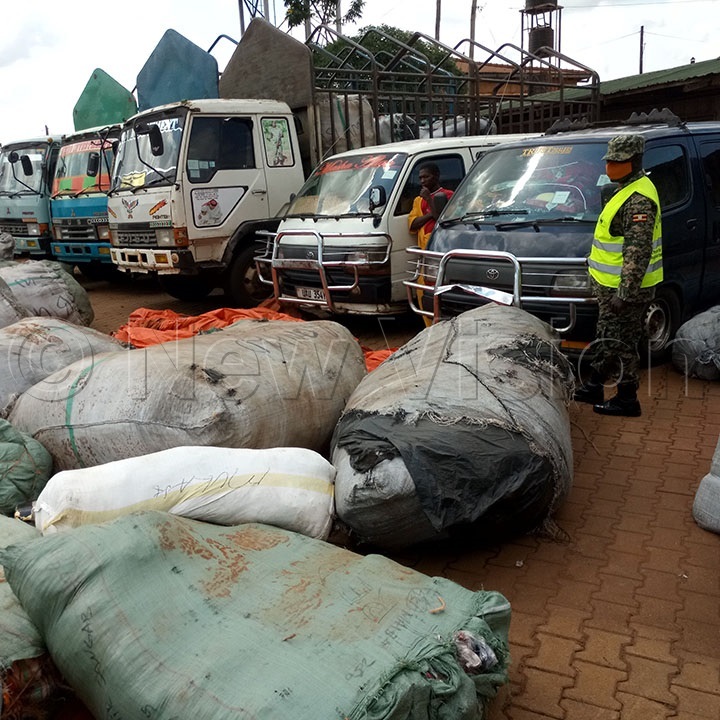URA to decide on possible penalties for smugglers
URA top enforcement team met with culprits that include owners of goods and owners and drivers of vehicles involved in transportation of the smuggled goods.
Uganda Revenue Authority (URA) enforcement team is yet to decide the possible penalties to culprits involved in smuggling of goods worth sh500m in value and sh200 in taxes in the eastern region.
URA is in possession of impounded goods majority of which are textile at their Busia one stop border parking yard.
URA top enforcement team met with culprits that include owners of goods and owners and drivers of vehicles involved in transportation of the smuggled goods.
Vincent Seruma,, the URA assistant commissioner for public and corporate affairs said though the 2004 East African Community set a maximum penalty of $10,000 among those involved in smuggle ,they looking at other alternatives.

"As URA we are more concerned when trader's goods are impounded under circumstances with heavy penalty and many may end up quoting business," said Seruna.
Julis Nkwasire URA's Assistant commissioner for enforcement. He said over the past two months there has been an increase in the smuggling of garments into the country through the porous borders along the Kenya- Uganda borderline more so through Sofia, Buteba, Amungura road and other points of entry.
Some of the interceptions were at URA's Busitema custom checkpoint He said with the closure of the borders and non-movement of interstate buses, the traders have been unable to move to Kenya to purchase the goods and therefore resorted to sending for these goods through suppliers and third parties, most of whom are not licensed customs to clear goods on behalf of the traders.
According to preliminary investigations the impounded goods belong to small scale traders of Kampala who usually clear their goods at Oceanic bus terminal.
"Culprits send money to ‘suppliers' mainly in Eastlands, Nairobi at a place popularly known as Eastli, a hub for the supply of garments. This is done mainly through M-sente options and Equity bank," said Seruma.
The goods are then loaded onto Kenyan registered trucks, which find their way from Nairobi to Western Kenya-Busia.
These smuggled goods are then offloaded into a consolidation centre on the Kenyan side for days, after which, a Ugandan registered truck crosses into Kenya loads the goods and returns into Uganda through un-gazetted routes mentioned above.
'The public should desist from any form of smuggling as it does not only lead to lose of revenue to government but also compromises fair competition among compliant traders," he said.
He said URA has now intensified vigilance and border patrols and intelligence gathering along the borderline and the eastern region.
We have enhanced our cross border information sharing and cooperation and intercepted a number of consignments.
Today, we are holding an awareness campaign to the tax paying pubic, to stop entrusting non-licensed individuals. We are also sensitising the public on the prescribed SCT clearance procedure.

The interceptions are as a result of the tax payers who entrust money with freelance individuals to clear their goods across the border. These in turn opt to use un-gazetted means and pocket the moneys they have obtained from taxpayers as taxes payable and instead opt to smuggle the goods.
However, Seruma said movement of transit cargo goods across the border is steadily improving with the online capturing of drivers' Covid-19 statues.
He said now transit cargo drivers first undergo Covid-19 test and the results are forwarded to the exit point via internet before setting off the journey.
Drivers who go through this arrangement no longer have to wait for long as the information is already captured online.